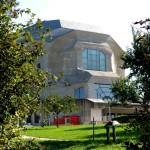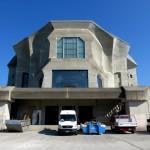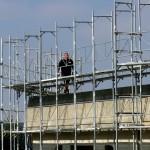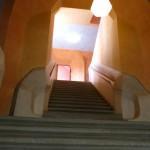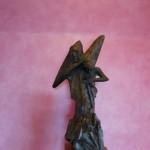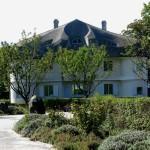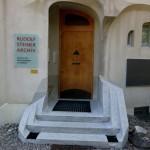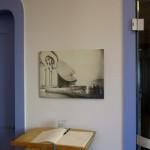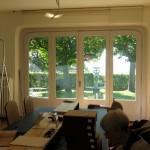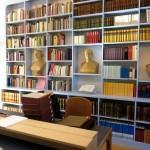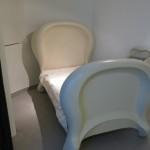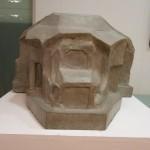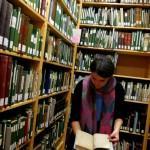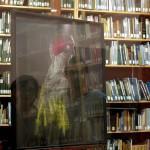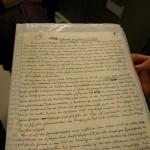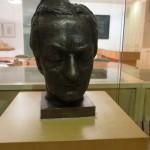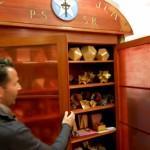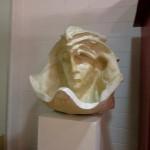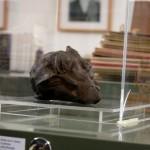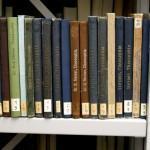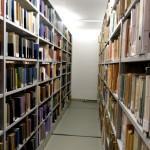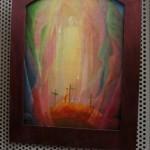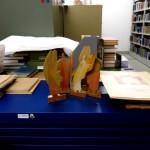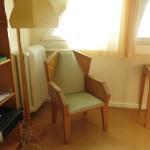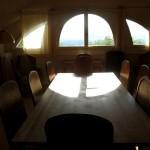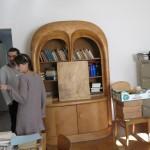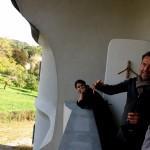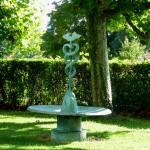Last Wednesday I was in Dornach near Basel at the “Rudolf Steiner Archives“. I was invited by Frank, a friend who works there as a co-publisher of the Complete Works of Rudolf Steiner. The archives are located in the House Duldeck, directly in front of the Goetheanum, the home to the international headquarters of the Anthroposophical movement founded by Rudolf Steiner.
I hadn’t been at the anthroposophical headquarters since 28 years. For 8 years in the 80s I had been intensely studying many works of Steiner. I even did the Waldorf Teacher training and worked in a Swiss Steiner school for 4 years. During these years, I had been in Dornach several times. However, I left the school and anthroposophy in 1990. I now was curious to see the headquarters as a visitor.
Frank gave me a warm welcome, and we went into the cafeteria inside the Goetheanum. Renovation work was going on outside – did it touch also the inner attitudes which I had experienced as difficult in the past? The noise of the machines was so loud that we didn’t stay in the “holy halls” but sat outside on a bench with a beautiful view around. I felt like in an open air museum of anthroposophy – it looked all the same as it was in the 80s.
We had an intense talk about his experiences as a project manager with the data management of the archives and about exclusivities between different groups, publishing houses and collectors. Technical project management in an environment of highly idealistic attitudes is not that easy.
I took some shots of the craftsmen working outside the building – very symbolic scenes. Then Frank went with me to the floor of the board of directors. I enjoyed sitting some minutes next to the Sanctum Sanctorum. The door-plate of one of the directors showed the name of a man whom I had met 30 years ago in Paris, where I had been a short-time trainee at a Steiner school and he a young teacher. The door, however, remained closed.
We then went to the House Duldeck, a fascinating iconic house built with dynamic from in concrete in the years 1915-20. Frank gave a guided tour – a young couple joined and also one of his colleagues. It was very impressive to have a profound look into the backgrounds of this house and the work of Rudolf Steiner. He had designed and shaped this building for a dentist, a friend of his who had given him all the area of the Goetheanum – which first was planned to be realised in Munich but met too many obstructions there. When the first Goetheanum was being constructed – a beautiful wood building – various anthroposophs opposed to the creation of a family house directly in front of the “mystery temple”. They feared that the view of diapers on the balconies would disturb the lofty feelings. Steiner, on the contrary, said that spirituality has to be integrated into daily life – and called the house “Duldeck”, meaning “corner of tolerance”. The first Goetheanum was destroyed by arson on New Year’s Eve, December 31, 1922 – January 1, 1923. Steiner immediately decided to build a new one, this time in concrete – and much bigger, so that the first Goetheanum would have enough place inside.
In the underground archives (fire-proof!) we got an impression of the gigantic work of Steiner, who had influenced not only the esoteric thought but had given impulses for medicine, farming, architecture, education (world-wide Waldorf Schools), dance, theater etc. We saw models of the first and second Goetheanum, of paintings, the hand-writings of rare manuscripts (The Secret Science…) or of Steiner’s many notebooks: He meticulously took note not only of thoughts for talks but also of the money spent- during a bigger part of his life he was quite poor. A huge library of all the versions of his books or the books of his library and of many other materials still not yet unearthed. I felt deeply impressed and humble sensing the incredible impact he had manifested.
At the end we had a look at rooms normally not shown in the upper floors – office and meeting rooms full of nooks and crannies, with beautiful views.
When I left I felt grateful that I had been given the chance of looking a bit behind these curtains. And I felt a bit reconciled with the impulse of anthroposophy. Over years Steiner’s split with theosophy and its consequences, which I very well understand due to the glamour of the successors of H. P. Blavatsky, had nevertheless left a profound irritation. I sensed an attitude of spiritual supremacy combined with trench warfare and a highly sceptical ideology towards the eternal wisdom teachings and their recent developments. When the golden sun-rays shone over the buildings there was a peaceful ambiance around and in me a hope that one day also the strongest thought-forms of anthroposophy will be transformed by the incoming new impulses of life.
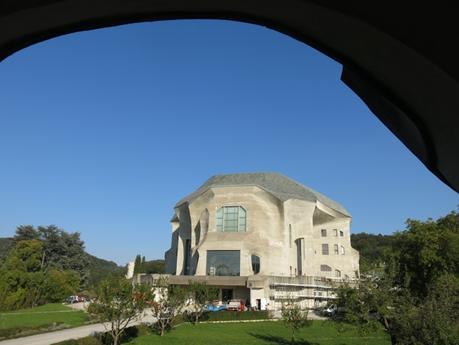
View of the Goetheanum from House Duldeck
